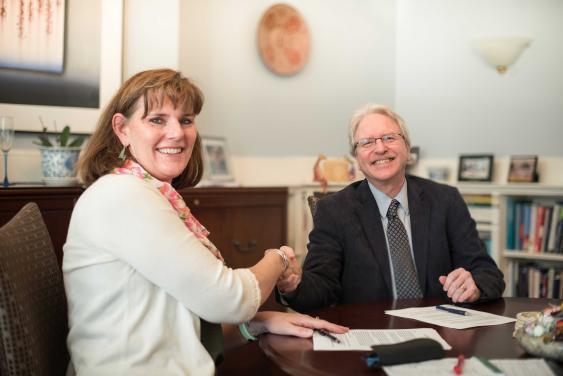By GWYNNE DULANEY, Staff Writer
Bryn Mawr and Haverford Colleges are like peanut butter and jelly, thunder and lightning, Christmas and New Years… the two simply go together. Many students are as much a part of one community as they are of the other. We take classes on both campuses, eat at both dining halls, participate in Bi-College clubs and form relationships at our sibling college that are just as strong as those we make on our home campus. For Bryn Mawr and Haverford students, the Bi-Co is a part of everyday life.
Bryn Mawr and Haverford’s partnership is not unique. Across the country, dozens of college and university communities have allied with neighboring institutions in the hope of enriching their students’ college experience through a broader selection of classes, activities and relationships. But are these other consortiums anything like our Bi-Co?
Over the next few weeks, I will be interviewing students from several institutions to see how their relationships with their sibling college compare to our own. I have decided to start with the Bi-College community that we identify with the most – Haverford and Bryn Mawr. Emma Rogers, BMC ‘20, and Diane Moore, HC’20, agreed to discuss their experiences with navigating the Bi-Co.
Q: Do you feel that being in a Bi-Co enhances your overall college experience?
ER: Definitely. If Bryn Mawr stood on its own I wouldn’t be able to major in music, so I think that it’s really important that that program is accessible to me. Also I feel that socially if Bryn Mawr was standing on its own it would feel very claustrophobic, so [Haverford] gives you a chance to get off campus and meet new people. What I appreciate about the Bi-Co is that it takes a certain type of person to apply to a historically women’s college, and a completely different type to apply to Haverford, so you have lots of different people coming together.
DM: I definitely feel that the Bi-Co enhances my college experience. I see the biggest benefit of the Bi-Co to be the expansion of academic course offerings. (Well, that and the access to the Bryn Mawr food!) Although I go to a very small liberal arts college, I feel that I have access to the academic resources of a much larger school because of our shared academic departments and courses. Since Haverford is such a small school, it’s great to have the opportunity to expand my social circle by meeting new people at Bryn Mawr. [For example,] Haverford would not be able to field an entire orchestra from its own student body, so the addition of Bryn Mawr students contributes to creating a better experience for all students.
Q: Do you think there’s any hostility between the two schools, and if so why?
ER: I don’t think that it’s genuine hostility. There can be weird tensions between [Bryn Mawr] and Haverford that make sense, the culture there is very different. But I think most of it is playful.
DM: [I just find] that the colleges seem to attract fairly different kinds of people. I see Bryn Mawr as having more of the activist-y types and being more liberal/political overall, although Haverford is as well. [It] isn’t a problem at all, just a difference.
Q: Would you change anything about the Bi-Co?
ER: I don’t think I would change anything. I’ve heard that in the past Bryn Mawr and Haverford were closer than they are now, but I can’t see how that’s possible, because I can eat there, live there, and take all of my classes there.
Photo Courtesy of Bryn Mawr College.
